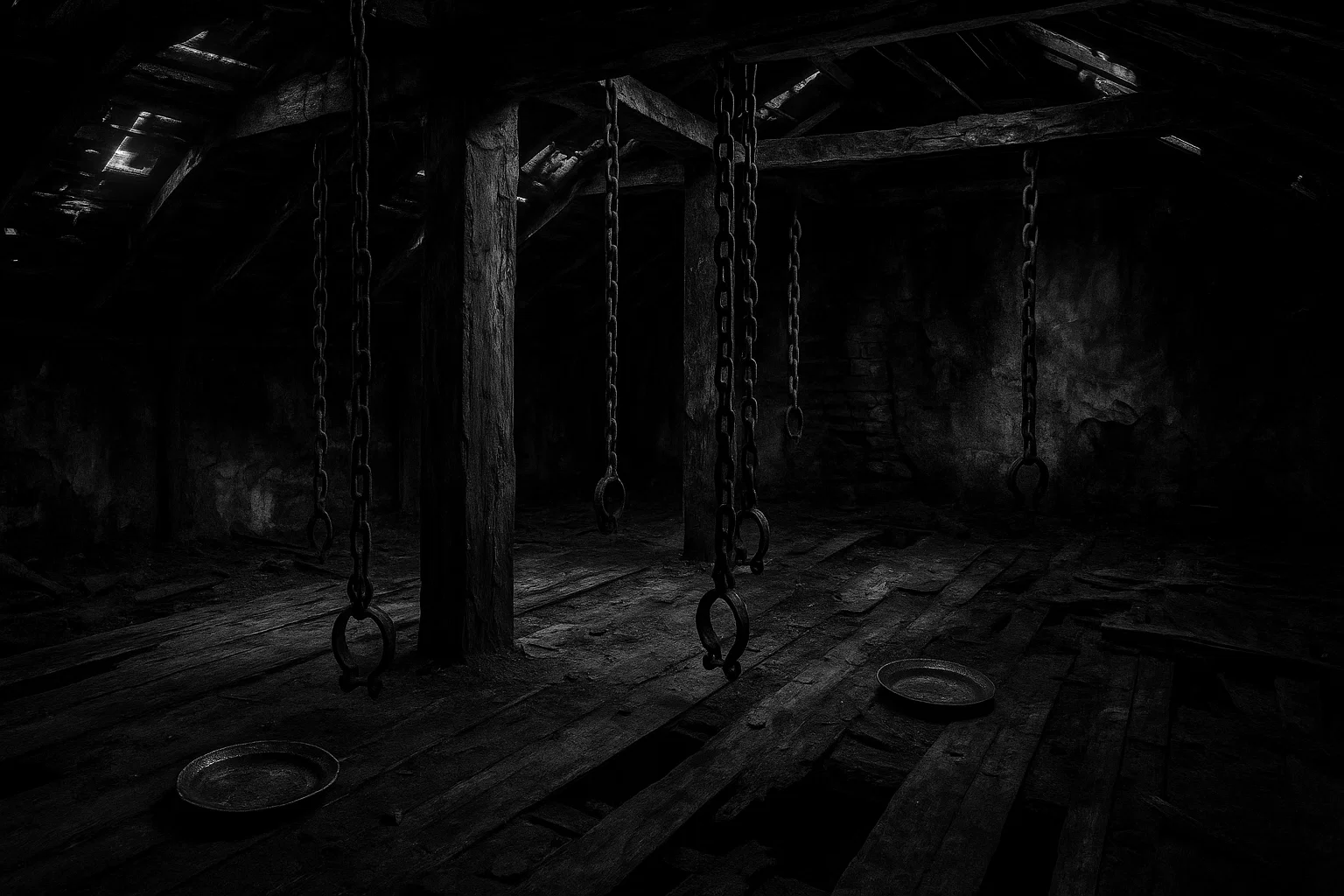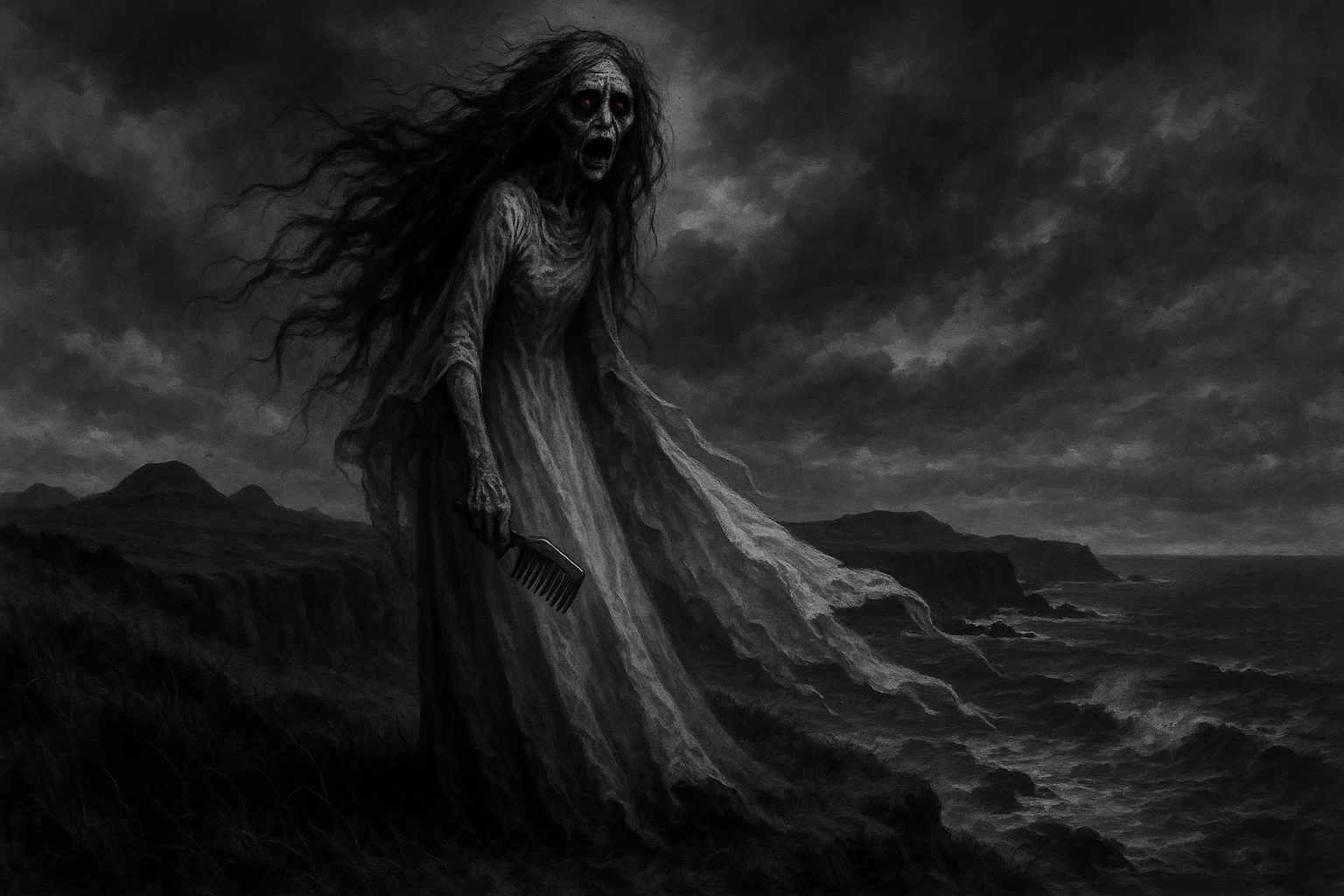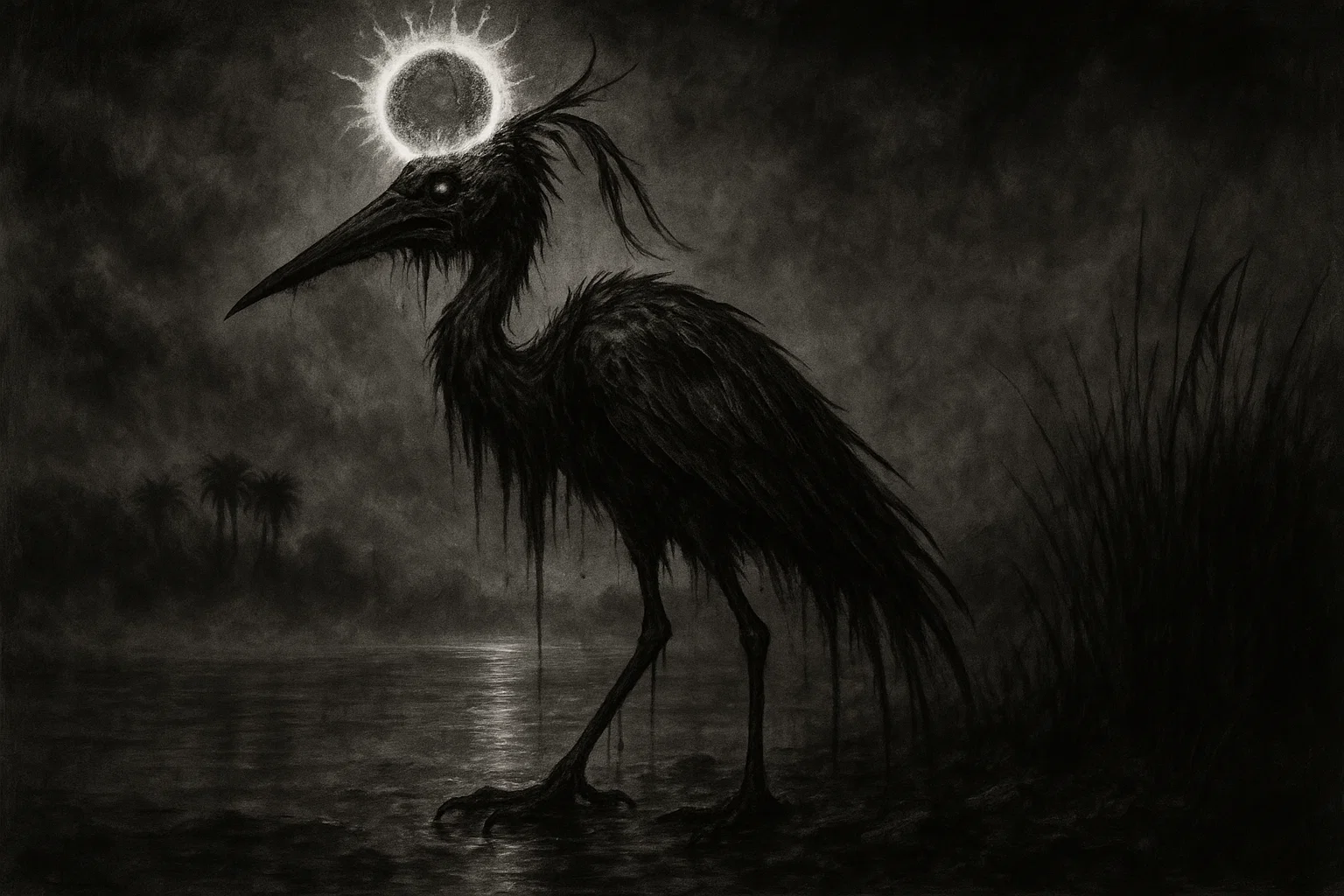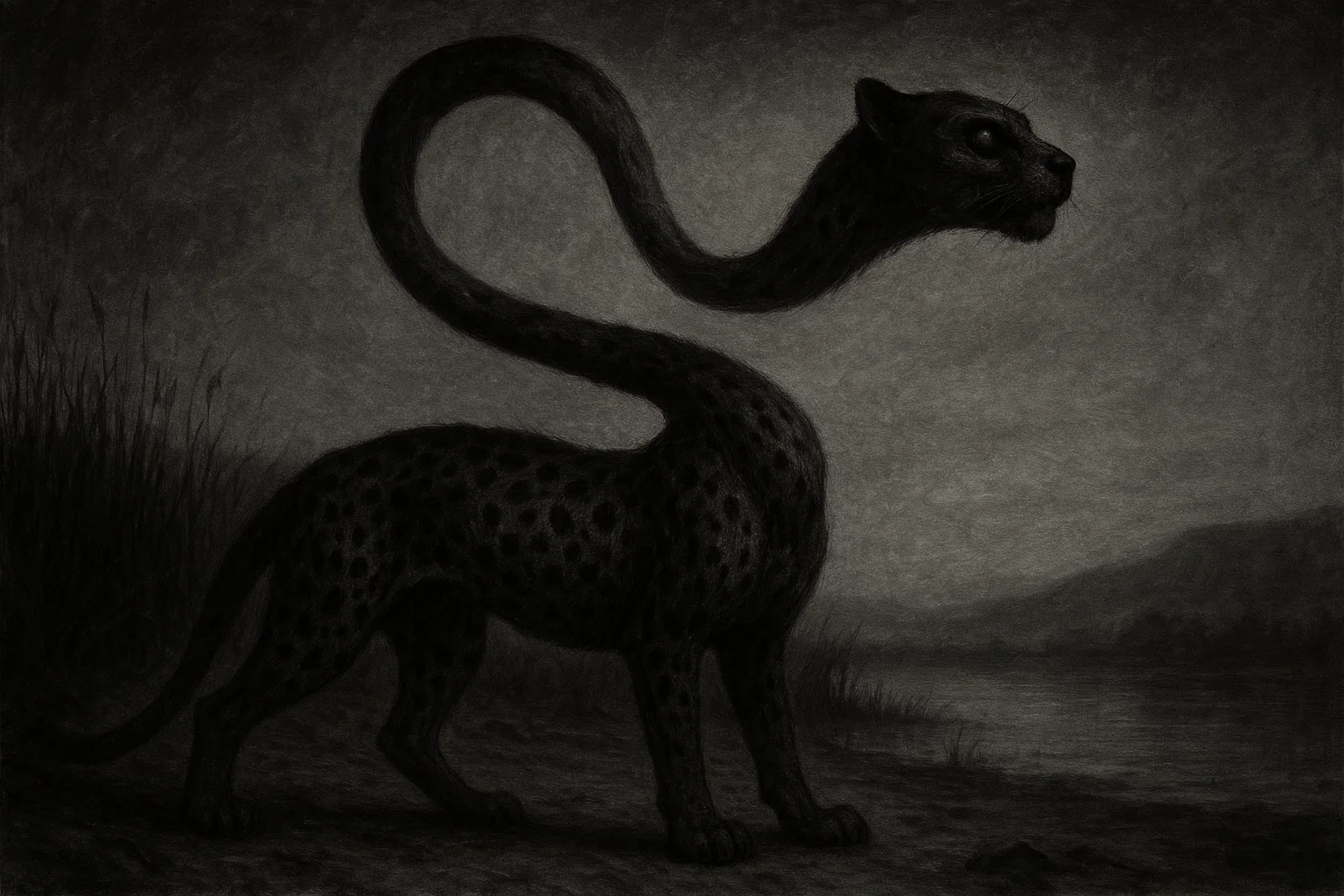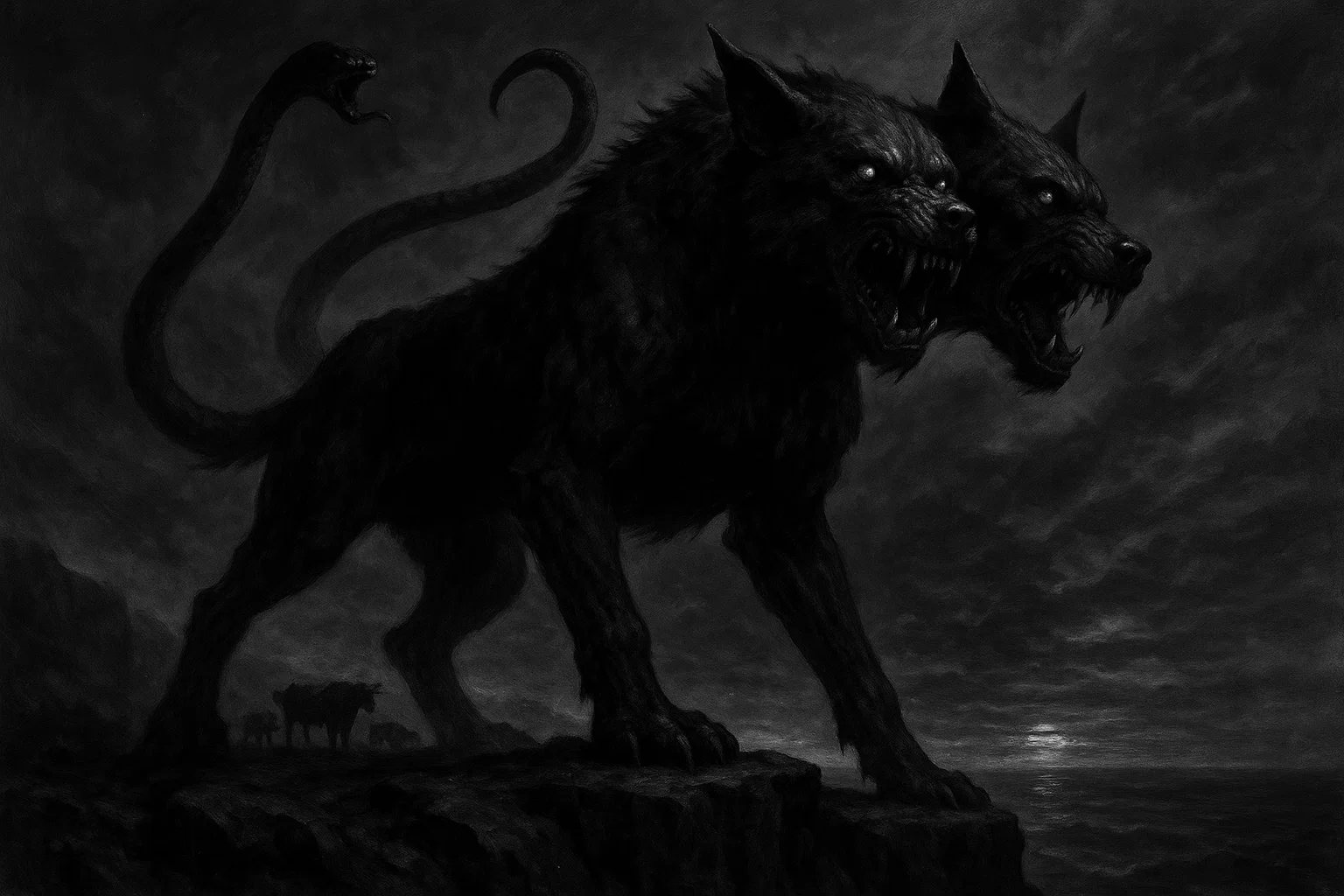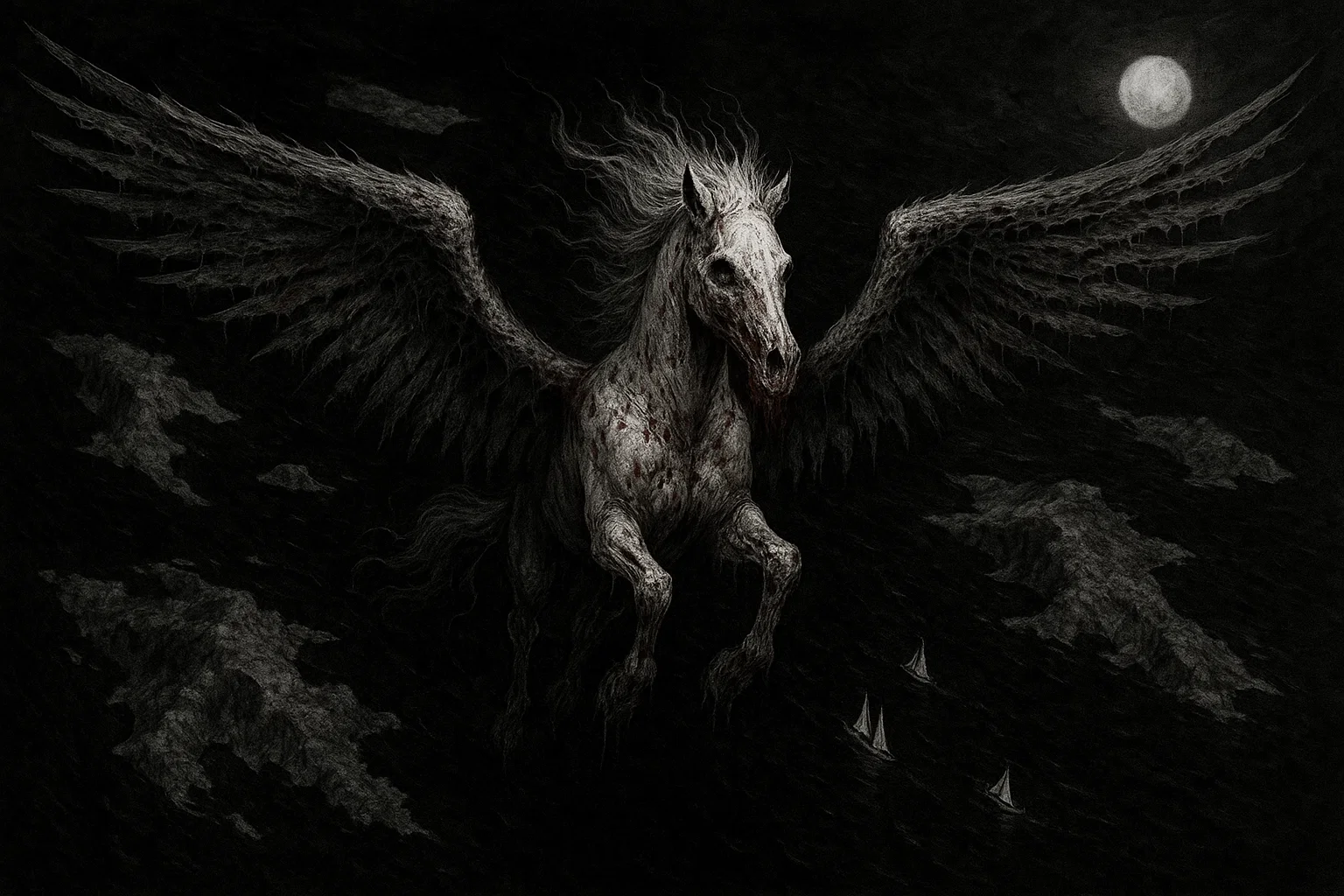The LaLaurie Mansion (the “Haunted House”) is a three-story Greek Revival structure built in 1832. The house gained notoriety due to the brutal atrocities committed by its original owner, Madame Delphine LaLaurie, against her slaves in the early 19th century.
Today, nearly two centuries later, reports of paranormal activity (including strange apparitions and unexplained sounds) link the site’s dark history to restless ghosts.
Summary
Key Takeaways
| Attribute | Details |
|---|---|
| Name | LaLaurie Mansion (also known as the Haunted House or Delphine LaLaurie House) |
| Location | 1140 Royal Street, corner of Governor Nicholls Street, French Quarter, New Orleans, Louisiana, United States |
| History | In 1834, a fire revealed severely tortured enslaved people in the attic; Madame Delphine LaLaurie fled after a mob sacked the home; the structure was rebuilt in 1838 following damage |
| Type of haunting | Intelligent, Poltergeist, Ghosts (General), Apparitions, Demonic |
| Entities | Spirits of tortured slaves; possible apparition of Madame Delphine LaLaurie; shadowy figures of chained men and young girls |
| Manifestations | Tortured screams and moans; clanking chains; dragging sounds; burning flesh odors; sudden temperature drops; objects moving; physical assaults like scratches and pushes; disembodied voices |
| First reported sighting | 1834, immediately following the attic fire discovery, with reports of shrieks echoing from the ruins |
| Recent activity | Ongoing as of 2024; visitors on ghost tours report hearing moans and seeing shadows near the windows; a 2023 paranormal investigation captured unexplained EVPs of cries for help |
| Open to the public? | No; privately owned residence, but viewable from the street during guided ghost tours in the French Quarter |
What Is the LaLaurie Mansion Haunting?
The haunting of the LaLaurie Mansion centers on claims of restless ghosts tied to the 1834 fire that exposed Madame Delphine LaLaurie’s torture chamber in the attic.
Firefighters discovered bound and mutilated slaves, some in states of prolonged starvation and surgical disfigurement, sparking outrage and immediate reports of ethereal cries from the site.
Over time, the manifestations within the LaLaurie Mansion evolved into intelligent interactions, in which entities seem responsive to provocation, suggesting awareness of their tragic past.
Paranormal enthusiasts describe the activity as multifaceted: poltergeist-like disturbances (such as furniture shifting without cause), alongside apparitions of shadowy figures in chains.
The mansion’s energy reportedly intensifies at night, with visitors feeling an oppressive weight—perhaps the echo of suffering endured by up to dozens of victims.
You May Also Like: 15 True Ghost Stories You Shouldn’t Read Alone After Midnight
LaLaurie Mansion Haunted History
The LaLaurie Mansion was built in 1831 when Delphine Macarty (known as Madame LaLaurie) purchased the unfinished property from Edmond Soniat du Fossat for $15,000.
Born in 1787 to a prominent Creole family, Delphine had married three times—first to Ramon de Lopez y Angulo in 1808, then Louis Barthelemy McCarthy in 1808, and finally Dr. Leonard Louis Nicolas LaLaurie in 1825—amassing wealth through inheritance and real estate.
By 1832, the couple completed the three-story Greek Revival mansion, featuring wrought-iron balconies and a cupola observatory, at a cost exceeding $20,000. The estate was a symbol of their status in New Orleans society.
However, beneath this opulence lay profound darkness.
Delphine, a celebrated hostess of lavish balls, had a reputation for cruelty toward her enslaved household staff (approximately 20 people by 1834).
In 1833, a lawyer intervened after witnessing Delphine chase a young slave girl, Lia, with a whip. Lia fled to the roof and fell to her death, her body hastily buried in the garden. Authorities fined Delphine $300 but returned the other slaves to her custody, a decision that stunned the community.
Tensions peaked on April 10, 1834. During a dinner party, an enslaved cook—chained in the kitchen—started a fire as an act of desperation, hoping to end her torment. As flames spread, guests evacuated, but Delphine refused firefighters access to the slave quarters.
Breaking in, they found seven survivors in the attic: men and women shackled to walls. Their bodies bear surgical mutilations—limbs broken and reset at odd angles, skin peeled in strips, eyes gouged, and mouths sewn shut. Some had festered wounds from iron collars. One man, emaciated beyond recognition, clutched a bowl of his own gruel mixed with excrement.
Reports in The New Orleans Bee described the scene as “fiendish atrocities,” estimating up to 57 slaves died in the house over the years, with bodies possibly buried in the courtyard.
A mob of over 4,000 citizens stormed the mansion that night, smashing furniture, mirrors, and chandeliers. Delphine and her family fled to Lake Pontchartrain, then Paris, where she lived until at least 1849.
The home lay in ruins for four years, its walls echoing with reported wails—witnesses claimed to hear chains rattling and pleas for mercy. Rebuilt in 1838 by Jean DeLabriola for $6,000, the structure served as apartments by 1840.
Still, tragedy persisted: in 1836, a tenant’s young son vanished, his bloodstains allegedly found under floorboards.
By the mid-19th century, the mansion functioned as a high school for girls from 1860 to 1866. However, according to reports, students endured mysterious scratches, hair-pulling, and apparitions of a “tortured woman” in mirrors—leading to its closure amid hysteria.
In 1888, Italian immigrants occupied the site. Soon after, one of the new residents was found eviscerated, his organs arranged ritualistically, with no theft reported. The crime scene was so bizarre that even the police suspected supernatural involvement due to claw-like marks on the walls.
The 20th century brought further instability. In 1894, another tenant was bludgeoned to death. His room was ransacked, yet his valuables were intact. Again, people suspected vengeful spirits.
Actor Nic Cage owned the property briefly from 2007 to 2009, intending it as a writing retreat for a horror novel. Yet he defaulted on loans due to personal problems, fueling rumors of a curse.
By 2012, oil executive Peter Eltinge purchased it for $2.1 million. During the renovations, the workers found rusted chains buried in the courtyard. However, there were no reports of any disturbances, paranormal or otherwise.
Today, LaLaurie Mansion stands as a private residence. Its facade masks layers of anguish that historians like Carolyn Morrow Long document in Madame Lalaurie: Mistress of the Haunted House (2012). The site’s history not only horrifies but prompts reflection on slavery’s enduring scars in American architecture.
LaLaurie Mansion Ghost Sightings
| Date | Witness(es) | Description | Location in Mansion | Manifestation Type |
|---|---|---|---|---|
| April 1834 | Firefighters and mob (anonymous) | Immediately after the fire, collective reports of blood-curdling screams and moans from the attic ruins; clanking chains heard as the mob sacked the home. | Attic and courtyard | Auditory (screams, chains); apparitions implied |
| 1862–1866 | Female students at the girls’ school | Multiple accounts of invisible forces pulling hair, scratching faces, and shoving pupils down stairs; one girl saw a “chained Black man” in a mirror, leading to fainting spells. | Classrooms and upper floors | Poltergeist (physical assaults); apparitions |
| 1894 | Neighbors and police | Following a tenant’s murder, residents heard dragging footsteps and whispers in French Creole; a shadowy figure seen fleeing the scene, leaving claw marks on doors. | Apartment hallways | Auditory (whispers, footsteps); shadow people |
| 1932 | Furniture restorer (unnamed worker) | During renovations, worker encountered a “young girl in rags” apparition who vanished through a wall; tools flew across the room, causing bruises. | Kitchen and slave quarters area | Apparitions; poltergeist (objects moving) |
| 1971 | Firefighters during blaze | Amid the fire, ethereal cries mimicked 1834 event; a “white woman with glaring eyes” (believed Delphine) appeared on the balcony, dissolving into smoke. | Balcony and attic | Apparitions; auditory (cries) |
| 2007 | Nicholas Cage (owner) | Cage reported cold drafts and “oppressive stares” while writing; heard faint whips cracking at night, abandoned the novel unfinished. | Study and bedrooms | Sensory (cold spots, sounds) |
| 2015 | Ghost tour group | A dozen tourists photographed orbs and shadows near windows; one felt scratches on arm, drawing blood; EVPs captured pleas like “free me.” | Exterior and courtyard | Orbs; physical marks; EVPs |
| 2023 | Paranormal investigator team | During overnight vigil, team recorded demonic growls and temperature plunge to 40°F; video showed a chained figure in attic doorway. | Attic stairs | Demonic sounds; apparitions; cold spots |
LaLaurie Mansion Ghost Sightings
Mob Aftermath (1834)
The first recorded LaLaurie Mansion ghost sighting happened just hours after the devastating fire on April 10, 1834.
After the fire was put out and the firefighters found the slaves locked in the attic, over 4,000 local people gathered into a furious mob. They started throwing bricks through windows and stealing silverware.
However, during the chaos, witnesses described hearing unsettling cries from the upper floors, as if the walls themselves were screaming. A local newspaper, The New Orleans Bee, reported these sounds as the “cries of tortured souls seeking justice,” mixed with the rattling of chains, echoing the pain of the victims.
One firefighter, who chose to remain anonymous, claimed to have seen ghostly figures huddled in the corners of the room, their eyes like hollow sockets, silently begging for help.
The situation escalated further when a chandelier fell to the ground on its own and broke apart near the looters. Some people ran away, convinced that the house was fighting back. Meanwhile, Delphine managed to escape by disguising herself as a servant.
You May Also Like: 15 Most Terrifying Haunted Hotels in Alabama
Multiple Assaults on Teenage Girls (1862–1866)
During its tenure as a girls’ academy from 1860 to 1866, the LaLaurie Mansion became a site of inexplicable terror for its young pupils.
Entrusted to educate the daughters of Confederate sympathizers during the Civil War tensions, the school housed 30 students. However, within months, poltergeist activity plagued the premises.
Girls reported bedsheets ripping from their grasp at night, cold hands gripping ankles under desks, and mirrors fogging with breathy whispers in unknown tongues—possibly Gullah dialects from enslaved ancestors.
The most harrowing incidents involved physical violations: scratches appearing on cheeks like whip lashes, hair yanked by unseen forces causing bald patches, and shoves pushing children down the grand staircase—three fractures documented in ledgers.
Principal Eliza Harper’s diary, archived in Tulane University, recounts a 1864 assembly where a “ragged girl” apparition materialized on stage, her neck bearing rope burns. She pointed accusingly before disappearing, triggering mass hysteria.
One student, 12-year-old Marie Duval, claimed nightly visits from a “chained giant” who breathed fire-scented air, leaving burn marks on her arms—verified by a physician as non-inflammatory.
By 1866, parents withdrew their children after a collective vision of blood pooling in the courtyard. The LaLaurie Mansion was closed due to “unholy influences.”
The Attic Ghost (1971)
In 1971, another fire broke out (likely caused by faulty wiring during renovations), and it bore a striking resemblance to a devastating fire from 1834. The firefighters arrived at midnight to find flames reaching the attic, where workers had recently discovered old rusted shackles.
As the firefighters worked to put out the fire, they heard strange cries from the smoke-filled vents—agonized pleas in Creole French, shouting “Libérez-moi!” (Free me!).
Captain Henri LeBlanc, who witnessed the scene, later shared in a police statement that he saw a ghostly woman on the third-floor balcony. She wore a bloodstained gown and had eyes that looked like glowing coals. As she gestured mockingly at him, she vanished into the smoke.
Inside the building, temperatures behaved oddly. While the outside air reached scorching 1,200°F, the attic was bizarrely cold, with frost forming on the chains. Luckily, there were no casualties, but two firefighters fainted, suffering from mysterious “phantom scratches” that left marks on their skin similar to surgical cuts.
After the fire, investigations uncovered bone fragments—identified as human—buried shallowly, suggesting there were undiscovered graves on the property.
Tour Group (2015)
On an October evening in 2015, a ghost tour group in New Orleans paused in front of a mysterious mansion, taking photos of its eerie facade lit by the moon.
As the tour guide shared chilling stories about the mansion’s dark past, strange orbs of light appeared in some of the photos, gathering around the second-floor windows like fireflies.
One tourist, Emily Hargrove, suddenly felt a cold sensation on her arm, and upon looking, she found three scratches that quickly began to bleed—reminiscent of stories about poltergeist activity from the 1860s.
Later, when the group listened back to the recordings they had made, they discovered creepy sounds. Among them were the cries of a child saying “Mommy, no,” mixed with what sounded like adult moans and the cracking of a whip.
Shadows moved quickly in the courtyard, taking on human shapes but appearing oddly elongated before disappearing into the garden. One video captured at 10:47 p.m. even showed a ghostly figure in shackles peering out from the attic, flickering like a candle.
Several group members started feeling nauseous and dizzy, with two of them even getting sick. The empathic participants on the tour suggested this might be due to the heavy energies surrounding the area.
You May Also Like: Is My Home Haunted or Just Old? How to Tell the Difference
Bayou Paranormal Society (2023)
In June 2023, a group from the Bayou Paranormal Society conducted an unauthorized overnight investigation at a location. They snuck in using drones for scouting and brought equipment designed to detect paranormal activity.
At 2:13 a.m., they started hearing strange growls from the corners of the attic, which turned into haunting snarls: “Leave… or join us.” The temperature suddenly dropped by 30°F, making everyone’s breath visible despite the warm, humid conditions. The lights on their devices began to flash inconsistently, indicating something unusual was happening.
One of their GoPro cameras captured a shocking sight: four figures that appeared to be in chains. They looked like they were from a different time, dressed in ragged clothing, with unsettling, twisted limbs and empty eyes.
The figures merged into a doorway and lunged at the camera, knocking it over. One investigator, Marcus Hale, developed scratches on his chest forming the letters “D.L.” A device measuring electromagnetic fields (EMF) went off the charts, showing levels far above normal.
After reviewing their recordings, the team found 17 amazing audio clips, including a woman’s voice hissing, “She watches,” which they think belonged to someone named Delphine.
Their findings were shared online, causing intense discussions. While some people claimed it was a hoax, the evidence they gathered—like photos of the wounds and audio recordings—is hard for skeptics to dismiss.
Theories
Residual Haunting from Traumatic Imprints
One popular theory suggests a residual haunting, where emotional imprints from the 1834 atrocities replay like a looped recording, independent of living observers.
Intense suffering—starvation, mutilation, and death—could embed psychic energy into the mansion’s structure, triggered by environmental cues (like fire or crowds).
Supporters of this theory cite ideas from quantum entanglement, suggesting that electromagnetic residues from iron chains and blood amplify echoes. The screams heard in 1834 and 1971 align with anniversary dates, as if the attic walls absorb and regurgitate pain.
Historians like Carolyn Morrow Long argue this fits Creole folklore, where “hot” sites retain “loa” essences from voodoo-influenced slavery.
On the other hand, skeptics disagree, claiming that infrasound from nearby traffic can induce auditory hallucinations—low-frequency waves below 20 Hz that cause unease and phantom noises. Yet, the consistency across eras—from mob wails to 2023 EVPs—implies a non-random pattern.
If what happened at LaLaurie Mansion was a form of residual haunting, it may explain the non-interactive manifestations (like orbs) but not responsive scratches.
You May Also Like: 10 Scary Campfire Stories That’ll Keep Everyone Awake All Night
Intelligent Spirits Seeking Justice
An intelligent haunting theory suggests conscious entities—primarily enslaved victims—linger to demand acknowledgment or retribution, interacting selectively with intruders.
Reports of targeted assaults (like 1860s hair-pulling or 2015 scratches forming initials) may indicate awareness and intent. Spirits may “choose” empathetic witnesses, as with Nicholas Cage’s drafts versus silent owners.
Voodoo scholar Ina Fandrich links this to ancestral unrest in New Orleans’ African diaspora, where unavenged souls bind to sites of violation, as in The Mysterious Voodoo Queen (2005).
Psychological and Cultural Amplification
Environmental psychology examines our reactions to places, such as haunted mansions, through a practical lens. Instead of attributing spooky experiences to supernatural forces, this perspective suggests they are often a mix of shared excitement and the mansion’s famous stories.
In New Orleans, ghost tours attract millions of visitors each year, getting them ready to see something eerie. This preparation can lead to misunderstandings, like mistaking shadows from ornate balcony designs for ghostly figures or interpreting gusts of wind as the sound of chains rattling.
Research from the Committee for Skeptical Inquiry, including insights from Paul Kurtz, shows that when people are presented with the idea of ghosts, it can prompt real physical reactions—such as feeling cold spots due to sweating or scratching oneself out of nervousness.
The fascination with ghosts in this area isn’t new; it goes back to a 1946 book called “Ghost Stories of Old New Orleans” by Jeanne deLavigne, which took old newspaper stories and added dramatic details, helping to create many of the myths we still hear today.
After Hurricane Katrina in 2005, there was a noticeable increase in ghost sightings, which folklore expert Andy Antippas links to the emotional recovery process.
Interestingly, reports of ghostly encounters extend back to events like the wails heard in 1834, long before these stories became sensationalized, and modern discoveries of bones confirm some darker histories.
Cursed Location from Unresolved Curse
The curse theory comes from Creole beliefs and suggests that Delphine’s refusal to repent for her wrongdoings created a generational curse—a kind of evil energy tied to the land due to rituals or voodoo repercussions.
Those who were enslaved and suffered greatly might have placed a hex on the area. After the fire, people who targeted the site only intensified this curse.
Different owners, like Cage, faced financial troubles similar to Delphine’s escape—losing their properties as if the curse was exacting a price.
Some people who study the occult believe that the bloodshed in 1834 served to strengthen the curse, attracting supernatural beings or energies manifesting as disturbances (like poltergeists). They also mention that certain energy lines in the French Quarter may be amplifying this effect.
You May Also Like: Fouke Monster 2025: New Sightings Shake Locals
Structural and Geophysical Influences
This theory suggests that the foundation of the LaLaurie Mansion in the Mississippi Delta interacts with underground water sources, generating electrical charges due to soil stress. This process might produce strange energy fluctuations that could explain ghostly experiences.
For example, sudden bursts of electromagnetic fields might lead to feelings of unease or even visions, which could explain the strange occurrences reported in 2023. Additionally, radon seepage, which has been linked to confusion and disorientation in haunted locations, may also contribute.
The design of the mansion’s cupola may also contribute to these phenomena by amplifying sounds from outside, making them seem like whispers inside the house. This relates to an old murder case from 1894, in which claw marks were found; the vibrations in the walls likely caused cracks that widened due to humidity.
LaLaurie Mansion vs Other Haunted Locations
| Haunted Location | City/State | Key Historical Event | Primary Manifestations | Public Access |
|---|---|---|---|---|
| Amityville Horror House | Amityville, NY | 1974 DeFeo family murders | Demonic voices, slime oozing walls, levitating objects | Private; exterior views only |
| Winchester Mystery Mansion | San Jose, CA | Sarah Winchester’s guilt over rifle fortune | Stairways to nowhere; ghostly hammering; apparitions of workers | Yes; guided tours daily |
| Lizzie Borden House | Fall River, MA | 1892 axe murders of parents | Phantom footsteps; bedsheet tugging; cold spots in guest rooms | Yes; bed-and-breakfast with tours |
| Bell Witch Cabin Site | Adams, TN | 1817–1821 torment of Bell family by entity | Slaps and pinches; animal mimicry; prophetic whispers | No; historical marker and cave tours nearby |
| Eastern State Penitentiary | Philadelphia, PA | 1829–1971 solitary confinement abuses | Shadow people in cells; disembodied laughter; cell doors slamming | Yes; audio tours and Halloween events |
| Myrtles Plantation | St. Francisville, LA | 1800s poisonings and slave hangings | Mirror apparitions; choking sensations; children’s cries | Yes; overnight stays and tours |
| Stanley Hotel | Estes Park, CO | Inspiration for The Shining; 1909 owner deaths | Pianos playing alone; guest room hauntings; hedge maze figures | Yes; ghost tours and stays |
| Villisca Axe Murder House | Villisca, IA | 1912 family slaughter | Axe shadows; children’s giggling; tool levitation | Yes; overnight rentals |
| Whaley House | San Diego, CA | 1850s suicides and hangings on site | Yankee Jim Robinson’s heavy footsteps; dollhouse toys moving | Yes; museum with evening tours |
| Trans-Allegheny Lunatic Asylum | Weston, WV | 1864–1994 patient lobotomies and overcrowding | Wheelchair pushes; electroshock echoes; patient screams | Yes; historical tours and investigations |
| Queen Mary Ship | Long Beach, CA | WWII troop transport deaths; 1936 maiden voyage sinking | Drowning apparitions in pool; engine room shadows; stewardess ghosts | Yes; hotel with haunted exhibits |
| St. Augustine Lighthouse | St. Augustine, FL | 1870s builder drownings; pirate executions | Children’s laughter on stairs; tools vanishing; blood on glass | Yes; climbable tower tours |
| Bird Cage Theatre | Tombstone, AZ | 1882–1892 gunfights and brothel murders | Floating orbs in balcony; poker chip flinging; spectral can-can dancers | Yes; underground tours |
| RMS Queen Mary | Long Beach, CA | (Duplicate entry for emphasis; see above) | N/A | N/A |
| Lemp Mansion | St. Louis, MO | 1901–1922 family suicides in brewery empire | William Lemp Jr.’s apparition; piano music; floating lamps | Yes; restaurant and B&B |
| Jerome Grand Hotel | Jerome, AZ | 1927 hospital mercury poisoning deaths | Elevator malfunctions; operating room chills; whispering nurses | Yes; hotel stays with ghost hunts |
| The Crescent Hotel | Eureka Springs, AR | 1937 “cancer cure” quackery deaths | Morgue table vibrations; Dr. Baker’s cigar smoke; nurse apparitions | Yes; spa hotel with tours |
| Franklin Castle | Cleveland, OH | 1870s serial killings and hangings | Hanging shadows; baby cries; chandelier swings | Private; occasional events |
| The Mohawk | Skeena, Canada | 1910 train derailment mass grave | Spectral passengers; lantern lights; whistle echoes | No; remote trail access |
| Edinburgh Vaults | Edinburgh, Scotland | 18th-century slum poverty and body-snatching | Poltergeist pushes; Mr. Boots’ groping; child wails | Yes; underground ghost tours |
You May Also Like: Decarabia: Pentagram Spirit of the Ars Goetia
Is LaLaurie Mansion Haunting Real?
The LaLaurie Mansion stands as both a real piece of history and a spooky legend.
Known for its documented horrors, the mansion has become a hotspot for ghost stories passed down through the years. From the frightening events of 1834 to today’s ghostly recordings, the reports of strange sounds and physical encounters are hard to ignore.
Even though some skeptics argue that the excitement of ghost hunting in a tourist-heavy city can make people see things that aren’t there, the discovery of eerie items like chains and bones points to a past full of pain and suffering. These findings suggest that some spirits might be more real than we think.

